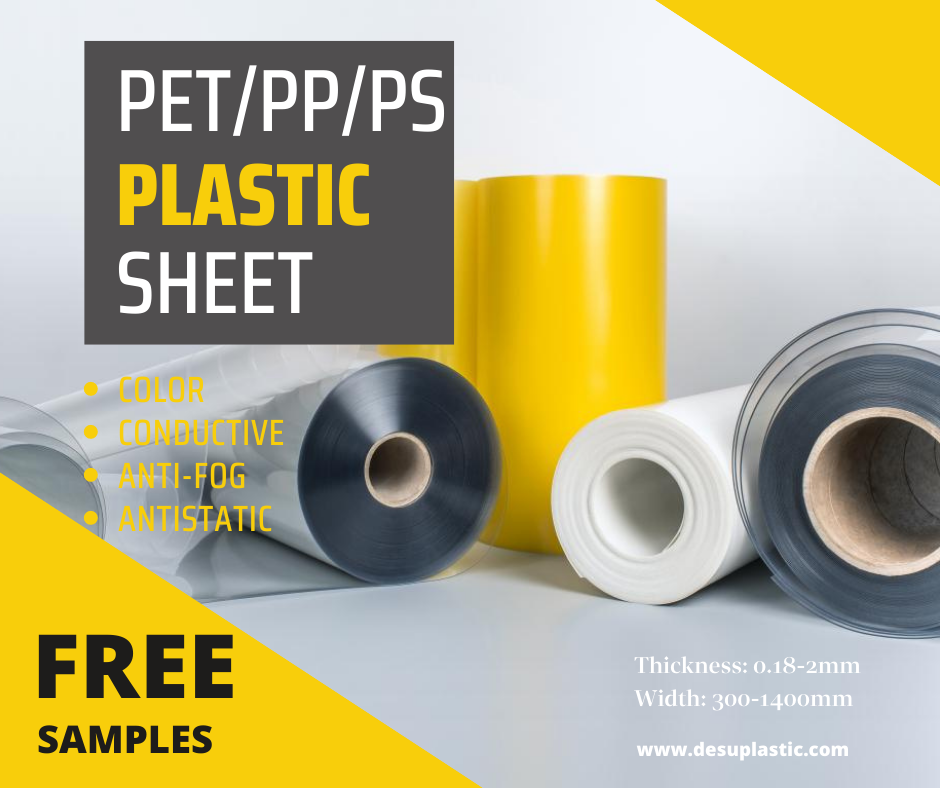Plastic as a widely used material, insulation is one of its basic characteristics. However, with the demand for plastic sheets, more sheets with special functions are needed, and conductive sheets are such a special material. Conductive plastic sheets, as the name suggests, have certain electrical conductivity and can play a role in some special places. So what are the characteristics and advantages of conductive plastic sheets?
- Surface resistance: ultra-thin conductive treatment layer, the conductivity is 104-109, and the corresponding surface resistance is made according to customer requirements.
- Stability: The conductive sheet has a stable conductive function, and it can be reused or recycled without changing the temperature and humidity without losing its anti-static performance.
- Reliability: The polymer synthesis technology avoids adding errors or uneven coating, and has good processability. After conductive treatment, it does not affect the performance of printing and molding.
- Cleanliness: PS printing products do not drop powder after blistering, environmental protection, no harmful substances, no corrosive and volatile gases, and are resistant to cleaning.
- Flexibility: The conductive sheet can be compounded on a variety of materials, such as PP, PE, PS, etc.

Conductive plastic is a functional polymer material that is mixed with resin as a base material and conductive additives, and processed by plastic processing. Mainly used in chip, electronics, integrated circuit packaging, electromagnetic wave shielding and other fields. Such as plastic conductive/anti-static gas transmission, infusion pipelines, low-resistance plastic packaging trays for electronic products, conductive/anti-static plastic sheets, sheets, foams, conductive films, it is the most important category of conductive polymer materials.
Conductive plastics have achieved a huge change from insulators to semiconductors to conductors, which is the largest possible change of all substances. Conductive plastics combine the electrical conductivity of metals (that is, a certain voltage is applied across the material, and current flows through the material) and various properties of plastics (that is, material molecules are composed of many small, recurring structural units) . Compared with traditional materials, it has the characteristics of light weight, easy molding, mechanical flexibility, high strength, low cost, adjustable resistivity (resistance value), etc., and can be easily synthesized or compounded into a variety of materials through molecular design. material of the structure.
Composite conductive plastics In composite conductive plastics, the plastic itself does not have conductivity and only acts as an adhesive. Conductivity is obtained by mixing conductive substances such as carbon black, metal powder, and the like therein.
These conductive fillers play the role of providing carriers in composite conductive plastics. Composite conductive plastics are easy to prepare and have strong practicability, and are often used in switches, pressure-sensitive components, connectors, antistatic materials, electromagnetic shielding materials, resistors, and solar cells. For example, the conductive plastic is applied to the GPS shell to prevent the electromagnetic interference of each control unit in the car from affecting the performance and even endangering the driving safety. It is used in the manufacture of high-end camera casings, which can well protect the precise electronic components in the camera and avoid problems such as image display distortion during use.
Conductive additives: nano carbon black, graphene, carbon nanotubes, conductive powder, nickel-plated carbon fiber, stainless steel fiber, other permanent conductive/antistatic fillers, etc.
Among them, carbon black is the most commonly used conductive filler in conductive composites. Compared with other conductive fillers and polymers, it has good durability wear resistance and price advantage. For the application of thin films, the dispersion and particle size of conductive carbon black are more critical, and the selection of conductive carbon black is relatively simple for thick-walled pipes.
